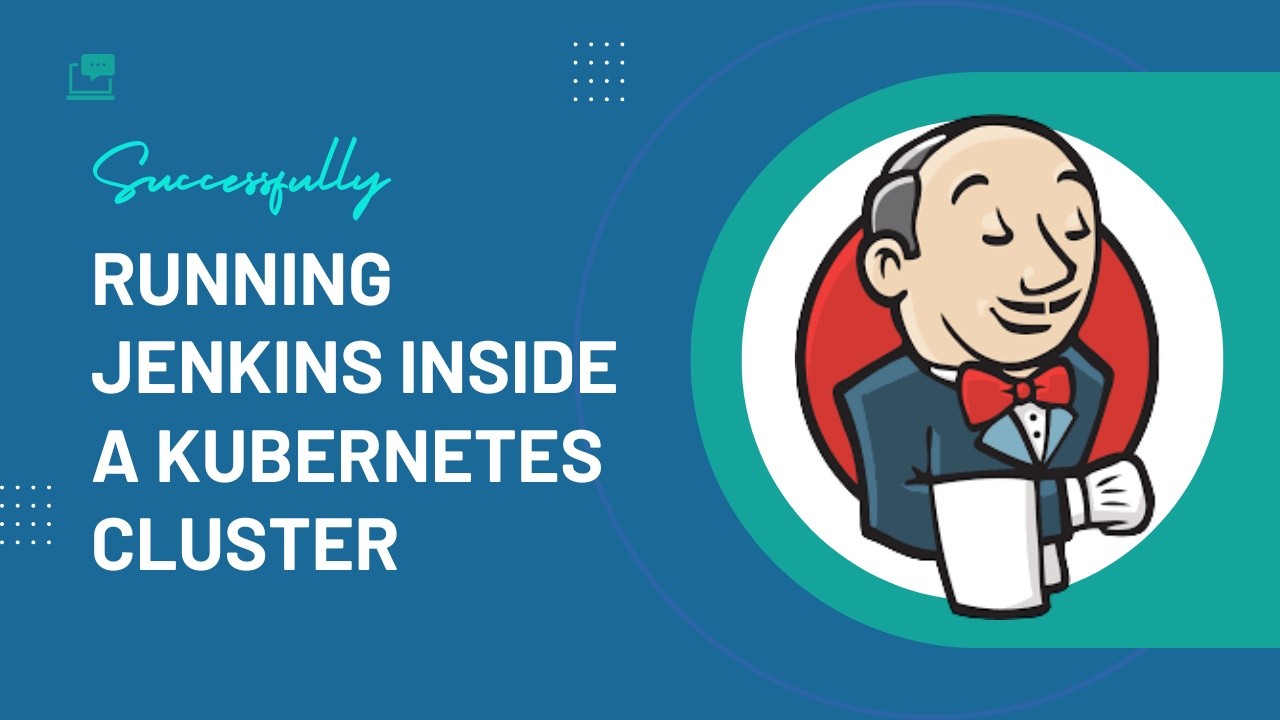Jenkins is an open-source automation tool that has become a standard in software development, particularly when it comes to Continuous Integration and Continuous Deployment (CI/CD). Kubernetes is an open-source platform for automating deployment, scaling, and management of containerized applications. In this blog, we will explore how to successfully run Jenkins inside a Kubernetes cluster and why it’s a good idea.
Benefits of Running Jenkins inside a Kubernetes Cluster
There are several benefits to running Jenkins inside a Kubernetes cluster. One of the main benefits is increased reliability and scalability. Jenkins can be run in a highly available manner on multiple nodes within the cluster, ensuring that your CI/CD pipeline is always up and running. Additionally, Kubernetes allows you to easily scale the number of Jenkins nodes in response to changes in demand, providing additional capacity when needed.
Another benefit of running Jenkins CICD inside a Kubernetes cluster is improved resource utilization. By running Jenkins inside a container, you can better manage and allocate resources, reducing the risk of resource contention and ensuring that your build and test environments are always fast and responsive.
Setting up a Jenkins Master in a Kubernetes Cluster
Setting up a Jenkins master in a Kubernetes cluster requires a few steps. First, you need to create a Jenkins master pod, which will run the Jenkins master process. Next, you need to create a Jenkins service, which will provide access to the Jenkins master from other parts of the cluster. Finally, you need to create a persistent volume claim (PVC), which will be used to store Jenkins configuration and build data.
To create a Jenkins master pod, you can use a Kubernetes YAML file that defines the pod and its resources. You can also use a Jenkins Kubernetes plugin, which automates the creation of a Jenkins master pod and provides additional configuration options.
Scaling Jenkins Workers in a Kubernetes Cluster
Jenkins workers can be scaled in a Kubernetes cluster using a Jenkins Kubernetes plugin, which provides a way to dynamically create and manage worker nodes as part of a build process. The plugin allows you to define worker templates, which specify the resources and configuration for each worker node.
To scale Jenkins workers, you need to create a worker template in the Jenkins master and configure the plugin to use the template when creating worker nodes. You can also define constraints and limits for worker nodes, such as the maximum number of nodes that can be created, the minimum and maximum resources available to each node, and the labels and namespaces that the nodes should belong to.
Configuring Jenkins Build Agents in a Kubernetes Cluster
Jenkins build agents can be configured to run on worker nodes within a Kubernetes cluster. To do this, you need to install the Jenkins agent software on each worker node and configure the Jenkins master to use the agents for builds.
To configure a Jenkins build agent, you can use a Jenkins Kubernetes plugin, which provides a simple way to manage agents and their configuration. The plugin allows you to specify the resources available to each agent, such as CPU and memory, and to set constraints and limits for agent usage, such as the maximum number of concurrent builds that can be run.
Need help on maintaining Azure Security Center Secure Score of Clients?
Our experts can help you on all kinds of works on Azure Security Center.
Conclusion
Running Jenkins CI inside a Kubernetes cluster provides a number of benefits, including increased reliability and scalability, improved resource utilization, and the ability to dynamically create and manage worker nodes. With the right tools and configuration, it’s easy to set up and configure Jenkins in a Kubernetes cluster, giving your CI/CD pipeline the performance, scalability, and availability it needs to keep your software development processes running smoothly. Whether you’re just getting started with Jenkins and Kubernetes or you’re an experienced user, running Jenkins inside a Kubernetes cluster is a smart choice that can help you achieve your software development goals more effectively. So why not give it a try and see the results for yourself?
ISmile Technologies believes that DevOps as a no-touch CI/CD driven software delivery approach which thinks that a single integrated delivery function from requirements to production will provide higher business value to customers efficiently. Schedule your free assessment today.








